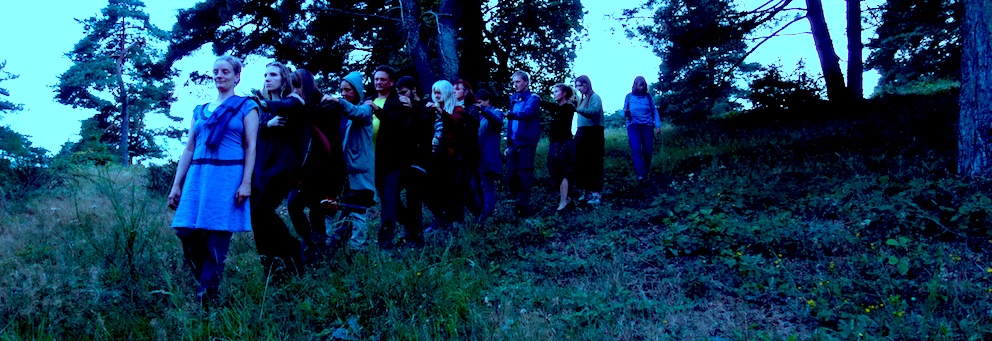Curatorial Mutiny, Vision Forum and our project “Do Trees Dream of CO2” are hosted by Earthwise in Bogens outside Aarhus for a workshop April 11-14, 2022. During these intense working days, artists will together investigate what happens to trees and humans at night and if the two can find a platform for nocturnal exchange. Here is what French artist Karine Bonneval writes about the trees’ nightly life:
During the day, the branches and leaves of the trees rise to catch the sunlight and activate the photosynthesis that is essential for their survival, but at night they fall back, as if to rest. For its growth, a tree absorbs water through the roots, stores less than 5% in the new cells and the rest evaporates through the leaves. During the day, under the influence of the climate (hotter or cooler and sunnier days), the absorption of water from the soil does not immediately compensate for the water lost through evaporation, and therefore the diameter of the branches decreases. This decrease is the consequence of the depletion of the water reserves in the bark.
At night, in the absence of evaporation, the re-hydration of the tree allows a recovery of the diameter of the branches accompanied by an increase in it, when the climatic conditions have been favourable to photosynthesis and therefore to growth. This day/time activity can be followed with an electronic device, the Pepipiaf. It memorises the variations in diameter of a branch of a tree very precisely, without disturbing the trees functioning, and at the same time measures the air temperature in the vicinity of the monitored branch.
Plants have photo-receptors to detect light and distinguish different colours in the light spectrum. They also have a sense of touch: a tree will adapt its growth to the wind and its intensity. They are also sensitive to smells and sounds. We humans have ears to perceive sounds. Trees don’t have senses in the same way, but their cells can perceive vibrations, especially roots and leaves. Plants are anchored in the soil and half of their organisms live underneath the ground and beyond our perception. But no ecological niche occupied by plants is silent. In addition to the sound of the five elements, almost all animals make a variety of sounds.
Phyto-acoustics is a new field of research researching how plants can perceive and emit sounds. For instance Monica Gagliano , from The University of Western Australia, has proven that roots grow in the direction of sound sources.
During the workshop the project’s members work with the Pepipiaf technology and use the signals that they get from the inner life of trees to make music in real time. The team will also try out new loudspeaker equipment and much more.

No comments:
Post a Comment